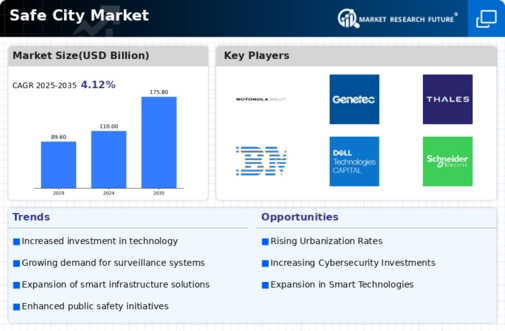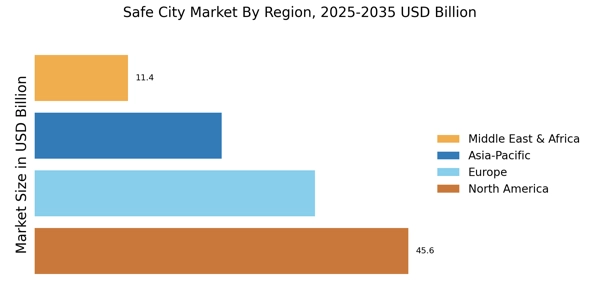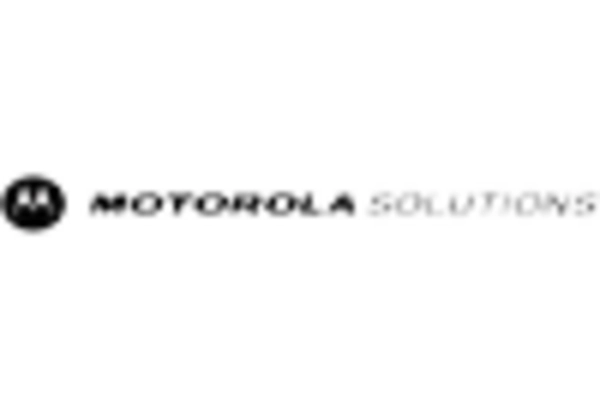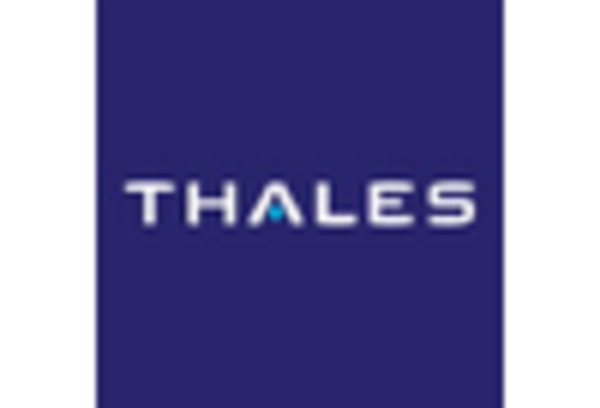Rising Urbanization
The increasing trend of urbanization is a pivotal driver for the Safe City Market. As more individuals migrate to urban areas, the demand for enhanced safety measures escalates. Urban centers are becoming densely populated, leading to heightened concerns regarding crime, traffic management, and emergency response. According to recent statistics, urban areas are projected to house over 68% of the world's population by 2050. This demographic shift necessitates the implementation of advanced safety solutions, including surveillance systems, smart lighting, and integrated communication networks. Consequently, the Safe City Market is likely to experience substantial growth as municipalities invest in technologies that ensure public safety and improve the quality of life for residents.
Technological Advancements
Technological advancements are transforming the landscape of the Safe City Market. Innovations in artificial intelligence, machine learning, and the Internet of Things (IoT) are enabling cities to implement more effective safety solutions. For example, AI-powered surveillance systems can analyze real-time data to detect unusual activities, while IoT devices facilitate seamless communication between various safety systems. The integration of these technologies enhances situational awareness and enables quicker response times during emergencies. As cities adopt these cutting-edge technologies, the Safe City Market is poised for growth, with an increasing number of municipalities seeking to leverage technology to improve public safety and operational efficiency.
Government Initiatives and Funding
Government initiatives play a crucial role in propelling the Safe City Market forward. Various governments are increasingly recognizing the importance of public safety and are allocating significant budgets to enhance urban security. For instance, recent reports indicate that several countries have earmarked billions for smart city projects, which encompass safety measures. These initiatives often include the deployment of advanced surveillance systems, emergency response technologies, and data analytics platforms. The commitment of public funds not only stimulates the Safe City Market but also encourages private sector participation, fostering innovation and collaboration. As governments continue to prioritize safety, the market is expected to expand, driven by both public investment and private sector innovation.
Focus on Data-Driven Decision Making
The emphasis on data-driven decision making is reshaping the Safe City Market. Cities are increasingly utilizing data analytics to inform their safety strategies, allowing for more effective resource allocation and response planning. By analyzing crime patterns, traffic incidents, and emergency response times, municipalities can identify areas that require immediate attention and develop targeted interventions. This data-centric approach not only enhances public safety but also optimizes operational efficiency. As cities continue to embrace data analytics, the Safe City Market is likely to expand, driven by the need for informed decision making and proactive safety measures.
Public Awareness and Demand for Safety
Public awareness regarding safety issues is a significant driver for the Safe City Market. As citizens become more informed about crime rates and safety concerns, their demand for enhanced security measures intensifies. This heightened awareness often leads to increased pressure on local governments to invest in safety technologies and infrastructure. Surveys indicate that a majority of urban residents prioritize safety in their communities, prompting municipalities to adopt comprehensive safety strategies. The growing expectation for secure environments is likely to drive the Safe City Market, as cities strive to meet the demands of their constituents by implementing advanced safety solutions.


















Leave a Comment